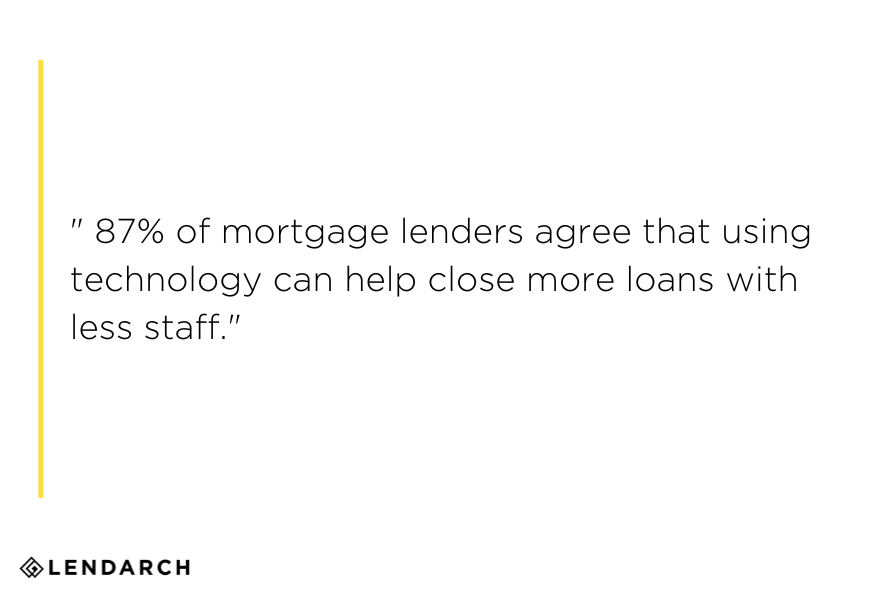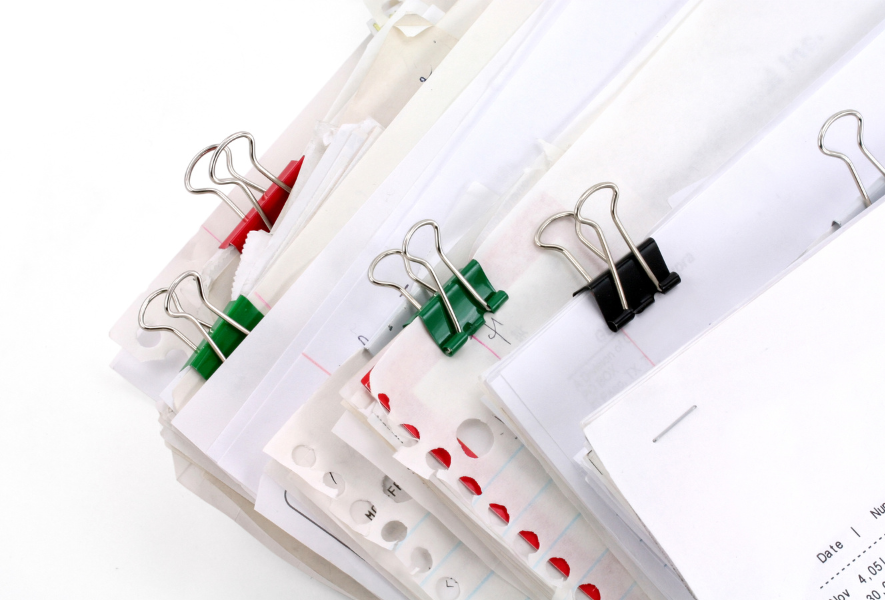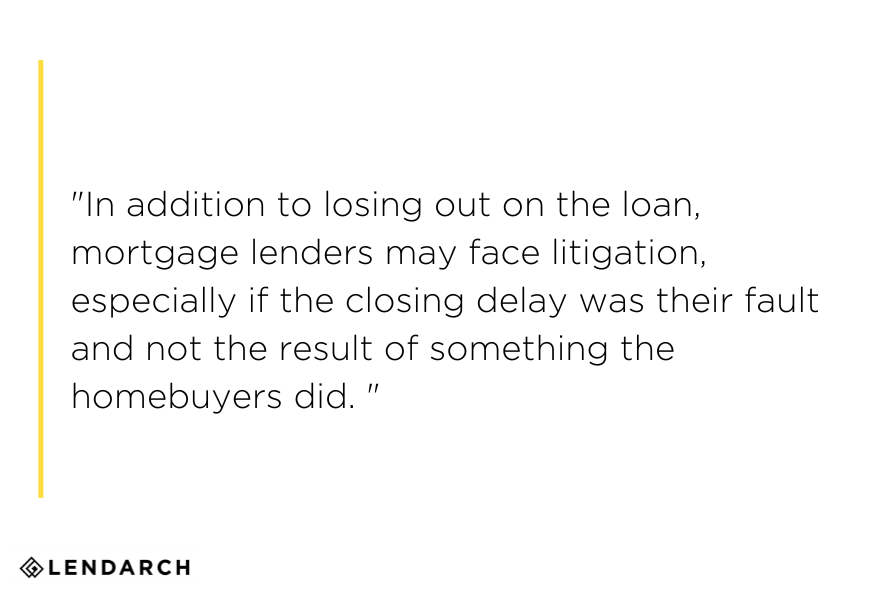Recent reports show that it takes an average of 49 days to close on a house.
For eager homeowners who are temporarily renting a space or living out of a hotel, those 49 days feel like forever. The last thing they want to experience is a delay in closing.
Unfortunately, many things can cause delays in closing on a house – home inspection findings, low appraisals, and pest damage can all delay the closing process.
But another thing that can inadvertently cause closing delays, negatively impacting the homeowner and the mortgage lender – mortgage lending inefficiencies.
What Causes Mortgage Closing Inefficiencies?
The mortgage lending industry is not exactly known for being efficient. This is partly because of manual processes that require multiple lenders to collaborate across a range of communication tools.
Here are a few things that can lead to closing inefficiencies.
Lack of standardized processes
Mortgage lenders need to collaborate with multiple parties at closing, including insurance agents, title agents, real estate agents, attorneys, and others.
Some lenders have figured out ways to streamline collaboration. For example, they might be able to get back to title agents in as little as a few others. Then there are others with lengthy, complex processes that result in a days-long turnaround time for each external party they work with.
The worst part is that there is no standardization for the lending process between companies. This makes it difficult to predict how long closing will take and can lead to longer than anticipated closing times.
HOA documentation collection
Often, manual mortgage lending workflows require tracking down an HOA, then contacting them to confirm fees and documents. Depending on how organized the HOA is, this could significantly delay closing times.
Human error
Anytime two people share information, there’s room for error. This is especially true for time-sensitive processes like closing a mortgage. In fact, FundingShield found that 47.9% of wire and title transactions in Q3 of 2022 had at least one risk issue
Whether communicating with a title company, HOA, notary, or other financial institution, mortgage companies can end up with errors in their documents. Once the errors are found, they need to be corrected, which could require contacting even more people and waiting around for the correct documents to come in.
What Happens if a Mortgage Doesn’t Close on Time?
Homeowners can be severely affected by closing delays financially. The most significant consequence of failing to close on time is that the interest rates could change, making the mortgage more expensive. If this happens, the homeowners may decide to back out of the deal altogether.
Of course, losing a mortgage loan is bad news for mortgage lenders, who have just wasted two months of their time trying to get homeowners to close only to have to start all over again. Losing mortgages routinely will impact a mortgage company’s pull-through rate and, consequently, profits.
In addition to losing out on the loan, mortgage lenders may face litigation, especially if the closing delay was their fault and not the result of something the homebuyers did.
How Can Technology Help Improve Closing Inefficiencies?
Many mortgage lenders have already embraced the abundance of digital tools available to help with digital mortgages, including virtual closings. However, not everyone has gotten on board yet.
A recent survey from the American Land Title Association found that virtual closings have spiked by 228% between 2019 and 2021. That’s good news for lenders, with 87% of mortgage lenders agreeing that using technology can help close more loans with less staff.

And yet, paper is still the go-to tool for many lenders. The same American Land Title Association survey found that only 5% of lenders had moved to a fully digital closing process, and 85% reported that their closing process was still paper-based rather than virtual.
Transitioning to a digital mortgage closing model can save everyone time while cutting down on unnecessary costs. Here are a few specific ways technology and automation can help improve the closing process for everyone involved.
1. Automate requests
Automating information requests from the HOA, insurance company, notary, and other parties eliminates the need to waste time on the phone trying to track down the information. These requests will automatically remind all parties what information is due, when it needs to be submitted, and who needs to receive it.
2. Task autocompletion
Another considerable time sink is following up to ensure every task is completed. By using task autocompletion, users can mark items as completed once they are done au. This gives everyone insight into what tasks have been completed and which are still outstanding.
3. Smart actions for triggered tasks
Some tasks can only be completed after a condition has been met. Automation technology allows mortgage lenders to incorporate smart actions into their workflow so that the right people will be alerted when a condition has been met. This keeps everyone informed at all times and can speed up the process considerably.
4. eClosing applications
Consumers are becoming increasingly comfortable using their mobile devices to complete transactions, including closing on a mortgage. Utilizing eClosing makes it easy for home buyers to close on their mortgage transaction without occupying the same physical space as a mortgage lender. This makes it faster and cheaper for lenders to close. One study found that lenders that utilize eClosing save up to $444 per loan.
eClosing applications allow home buyers to chat virtually with a mortgage lender and notary. They also make it easy to sign documents digitally.
5. Remote online notarization (RON)
Thanks to new technology, home buyers don’t need to sit face-to-face with a notary while closing their mortgage. Instead, they can use remote online notarization (RON) to speak via a virtual call during closing. The notary verifies the borrower’s identity on the call and notarizes documents once the borrower has e-signed them.
LendArch Can Help Make the Closing Process More Efficient
A mortgage lending company is only as successful as its most inefficient process.
For many mortgage lenders, the most inefficient process is closing on the loan. However, thanks to the acceleration of digital tools, that does not have to be the case any longer.
Companies looking to eliminate mortgage closing inefficiencies can contact LendArch to learn more about the tools available. Our friendly experts can work with you to determine the best tools for your company. Contact us today to get started!
As Chief Executive Officer, Tammy Richards brings over 35 years experience in Mortgage Banking, EClose/EMortgage, Robotics/AI/OCR/ICR implementation and more. She has been an executive and has led Nationally at Bank of America, Caliber Home Loans and most recently served as Chief Operating Officer for Loan Depot. She is passionate about and is an expert in the mortgage industry's ongoing tech transformation.
















